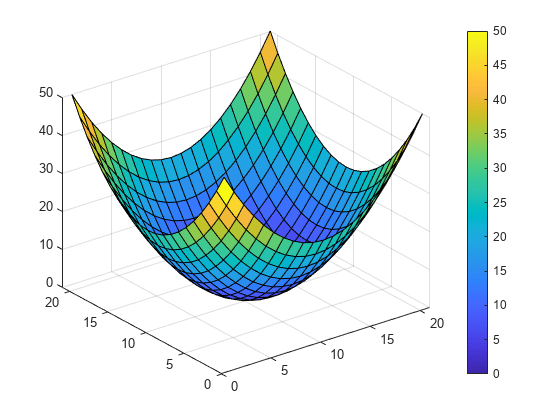clim
컬러맵 제한 설정(R2022a에 caxis에서 이름이 변경됨)
설명
clim(는 현재 좌표축에 대한 컬러맵 제한을 설정합니다. limits)limits는 [cmin cmax] 형식의, 요소를 2개 가진 벡터입니다. 컬러맵 인덱싱 배열에서 cmin보다 작거나 같은 값은 모두 컬러맵의 첫 번째 행에 매핑됩니다. cmax보다 크거나 같은 값은 모두 컬러맵의 마지막 행에 매핑됩니다. cmin과 cmax 사이에 있는 모든 값은 컬러맵의 중간 행에 선형적으로 매핑됩니다.
참고
clim 함수는 CDataMapping 속성이 "scaled"로 설정된 그래픽스 객체에만 영향을 줍니다. 트루컬러를 사용하거나 CDataMapping이 "direct"로 설정된 그래픽스 객체에는 영향을 주지 않습니다.
clim("auto")를 사용하면 컬러맵 인덱싱 배열의 값이 변경될 때 제한도 자동으로 업데이트됩니다. 이는 디폴트 동작입니다. clim auto 명령은 이 구문의 대체 형식입니다.
clim("manual")은 제한의 자동 업데이트를 비활성화합니다. clim manual 명령은 이 구문의 대체 형식입니다.
clim(은 특정 좌표축 또는 독립형 시각화에 대한 컬러맵 제한을 설정합니다. 위에 열거된 모든 구문에서 target,___)target을 첫 번째 입력 인수로 지정할 수 있습니다.
lims = clim은 현재 컬러맵 제한을 [cmin cmax] 형식의 벡터로 반환합니다.





